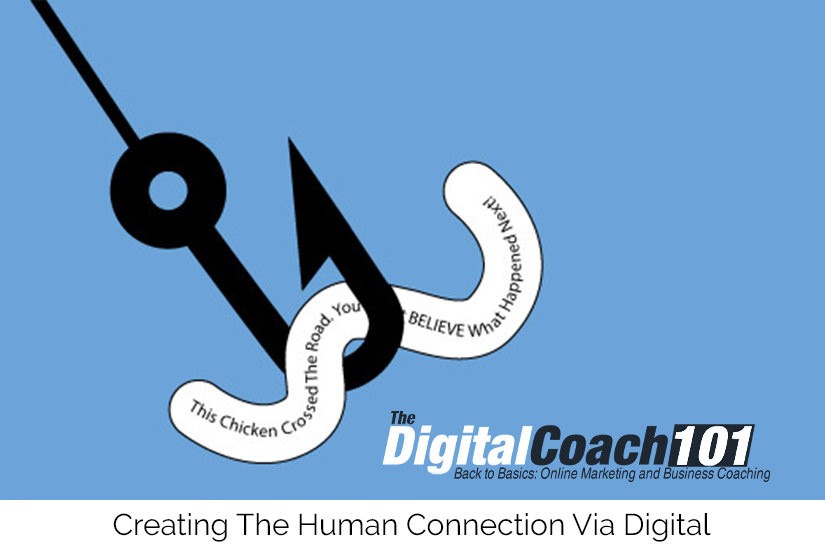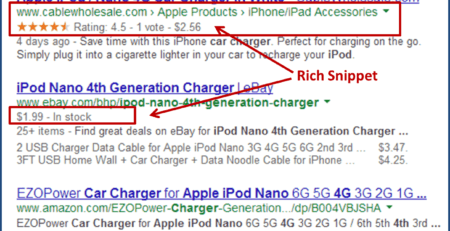The Great Click Bait Conundrum – To Use Or Not To Use
You’ve heard of click bait and fake news, right? Hold that thought…
It only lasted two minutes, but boy, did the earth move during that time. How many conversations with the girls over a glass or two of wine have started like that, I wonder?
In this case however, the context was very different.
The two minutes in question occurred on the morning of October 10, 2017. Between 9.34 and 9.36am, E.T, to be exact. In those two short minutes, the earth shifted very slightly off its axis, the birds stopped singing, and everything became somewhat surreal.
The event that caused this temporary, but primal shift in the natural order of things was the publishing of several articles claiming that Google had bought Apple for $9 billion. Apparently, the deal had been pre-arranged by Steve Jobs before his death, and all the details were outlined in his will.
It was all rather ridiculous, and the story turned out to be nothing more than fake news. Click bait that was, according to Dow Jones, “never intended for publication, and accidentally published as part of a technology test.” Mmmm hmmmm. We believe that with as much faith as we believe the cheque is in the mail! Or, to update that phrase a bit, that the EFT payment is on its way!
I mean, seriously. There were at least six fake headlines, and one fake story. Could all that have happened totally by accident? Surely someone, somewhere, physically typed it out and pressed “publish.”
Either way, the fallout was impressive.
Apple’s stock jumped a full $2 in those two minutes. Google stock climbed too. Although the markets quickly returned to normal after the posts were removed and a statement issued by Dow Jones released, the incident highlights the potential effects fake news can have in the real world.
In 2013, for example, the Twitter feed of the Associated Press was hacked, and a story posted about an explosion at the Whitehouse that injured then President Barack Obama. Within minutes, this spurious click bait wiped billions off the international stock markets.
What Is Click Bait?
In basic terms, click bait is the Internet version of the new guy in the office who’s desperate to make friends with his new colleagues. After an honest examination of the interesting things about his life he could potentially share, he realises, with a deep and sudden sadness, that he is actually the Mr. Bean of the corporate world. Just call him Cellophane Man, because he’s so unremarkable he’s pretty much invisible.
But all that is about to change.
With a flash of inspiration, a true light bulb moment, he hits upon a strategy that is guaranteed to win friends and influence people. To catapult him from the wings to centre stage. Goodbye Mr. Bean, hello Mr. Office Hotshot. And to achieve this status, this label of Most Popular Colleague and Employee Most Likely To Succeed, he only has to do one thing:
Lie.
Well, maybe not lie in the strictest sense of the word, but definitely big up the truth a bit. OK, a lot, actually. He’s going to pretty much stretch the truth so thinly, you can almost see right through it. Except you don’t. You believe it. You just can’t help yourself. There might be small alarm bells going off in the back of your head but you ignore them because this guy is the bomb! You have to be his friend. You need to know more about him. Not knowing will somehow diminish you and make your life a sad and lonely place.
The man is click bait in human form.
Essentially, click bait is any online content that deliberately over-promises and under-delivers with the sole intention of getting you to click through to a particular website. Although click bait comes in a variety of guises, its content usually follows a tried and tested formula, which this article describes brilliantly: “Pair a psychologically alluring idea with an image and a cliffhanger statement, then tie it algorithmically to content users are already consuming.”
In other words, it’s fiendishly clever cyber-manipulation that sucks you in with a sensationalist headline: “….you won’t believe what happened next…” or “here’s what nobody’s telling you about your…..” Sadly however, it then usually fails to deliver on your expectations.
Why Some Businesses Love Click Bait
Small businesses in particular just luuuuurve using click bait. Why? Because it’s a sure fire, and super fast, way of increasing your web traffic. This is not always only beneficial to the business – users can save a lot of time and effort reading listicles that save them having to trawl numerous sites for information. So “Here are 10 Things You Can Do To Look Younger – You Won’t Believe Number 8” may not always be a waste of time.
Increased website traffic can drastically improve your presence on search engines, which is always good.
And it’s not just commercial businesses that resort to click bait practices. As this article shows, our very own tabloid The Daily Express is not shy about employing a few dodgy tactics. Although most tabloids are guilty of click baiting much of the time, there seems to be a recent increase in the frequency with which they do it.
So, Does Click Bait Work?
When used cleverly and sparingly, click baiting can be an effective marketing tool. If you have a catchy enough headline, you will undoubtedly get people to visit the link. A good click bait headline exploits what’ we call the “curiosity gap.” This means it provides just enough information to pique your interest and make you curious, but not enough to satisfy that curiosity. Which is why you click through to the whole page. So, if increased traffic is your only intention, then you should be feeling very happy with life right about now.
The problem comes when a visitor arrives on the page to find that the content only vaguely relates to the initial headline or link. They then feel duped and betrayed, and will immediately leave your site. Very quickly, your brand becomes synonymous with dodgy information. You might have (temporarily) gained traffic, but you’ve lost trust in the process, and that’s never a good thing.
Overusing click bait can also come back to haunt you in terms of SEO (Search Engine Optimisation). Google is forever introducing new updates, and many of these are designed to detect click bait, fake news and duplicate content. If it finds any of these things on your page, it will punish you by labeling your site as one with low quality content. Sites so labelled get pushed ever further down search results pages by those with quality content.
Search engine algorithms also use bounce rates when ranking website pages. So, if people arrive at your page through nefarious means, they quickly leave it (or “bounce” away) once they realise they’ve been duped. Because they’ve spent almost no time on your page, and they haven’t clicked thorough to any additional pages, Google immediately classifies your site as less valuable to users. This is the kiss of death. The higher your bounce rate, the more your site will suffer.
Basically, although it might be tempting to succumb to click bait’s allure, think very carefully before you do. When used sparingly, it can generate positive traffic and boost your presence online. But you don’t want to rely on it. Over-use of this questionable tactic will hurt your SEO and tarnish the image of your brand.
How To Attract Clicks Without Using Click Bait
Yes, it is definitely possible! And without resorting to snooze-inducing titles! People are only prepared to spend a limited time consuming content online, so it’s critical to immediately attract both their attention and their clicks.
Click bait works (at least initially) because it capitalises on people’s very real need not to feel left out. Yup, FOMO is a thing. We hate feeling as though there’s something we should know, but don’t. That if we don’t read this article, we’re missing out on something that will make us richer, smarter, funnier or more interesting than the next guy. When someone knows something we don’t, we can’t bear it. Our natural instinct to be included means we push ourselves to find out whatever knowledge we’re lacking.
But there is a way to scratch this particular itch without clickbaiting. We can arouse curiosity by writing headlines that are powerful, but not misleading. How? The secret is to first write totally amazing content that leaves people completely awestruck once they’ve read it. If you have mind-blowing content, you can afford to get a bit provocative with your headline. You know your content delivers on your headline’s promise, so you’re golden.
A great tactic is to use power words to tap into our basic human emotions such as fear, jealousy, envy, greed and lust, among others. What are power words? So glad you asked!
As their name implies, power words have strong meanings. They’re like the Arnold Schwarzeneggers of the content world. They inspire action and trigger emotions.
OptinMonster has a list of power words it claims will boost conversions by 12.7%! Words such as Massive, Guilt-Free, Hidden, Confessions, Secret and How To, among hundreds of others, can all be used with proven effect in article headlines. Provided, of course, your content lives up to the hype.
If you’d like a little help with that – or, indeed, with any other aspect of digital marketing – the content kings and queens at Digital Coach are standing by to shower you with awesomeness. So don’t delay! Don’t wait around with, ahem, (click) baited breath! Call now. Go on. You know you want to. Also, we have coffee.











